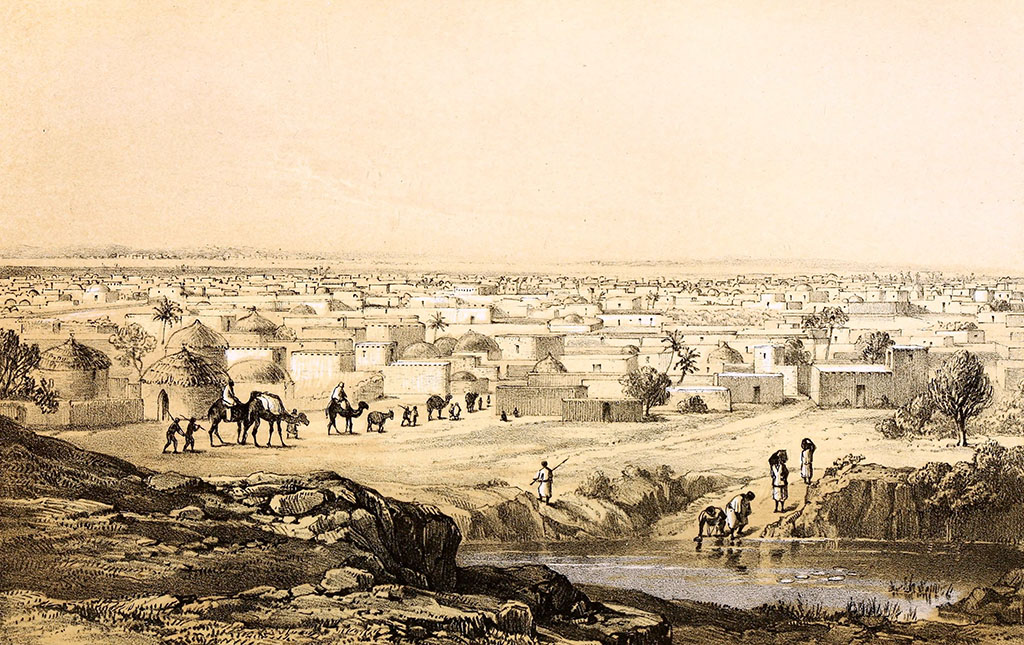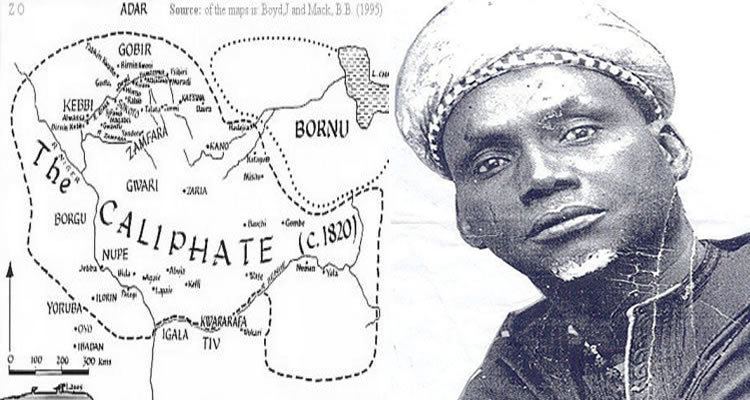
Hausaland, sometimes referred to as the Hausa Kingdoms, was a group of small independent city-states in northern central Africa between the Niger River and Lake Chad which flourished from the 15th to 18th century CE. The origins of the Hausa are not known, but one hypothesis suggests they were a group of indigenous peoples joined by a common language - Hausa - while another theory explains their presence as a consequence of a migration of peoples from the southern Sahara Desert.
 |
| Map of lake chad |
Trade
The Hausa states traded gold, ivory, salt, iron, tin, weapons, horses, dyed cotton cloth, kola nuts, glassware, metalware, ostrich feathers, and hides. There was trade with the coastal region of West Africa, Oyo in the Bight of Benin, and the Songhai Empire (c. 1460 -1591 CE) to the east. Slaves were an important source of revenue for all the cities but Zaria, in particular, specialised in acquiring slaves via raids to the south. Cities specialised in the manufacture or trade of certain goods, for example, dyes - especially indigo - at Katsina and Daura or silver jewellery at Kebbi and Zamfara.Hausaland became famous (and still is today) for its finely worked leather goods such as water bags, saddles, harnesses, and sacks to transport goods for the region’s trade caravans. Various crafts were organised into guilds which ensured standards were maintained and prices were kept fair. Hausa agriculture, boosted by such techniques as crop rotation and the use of fertilizers, produced crops which included millet, sorghum, rice, maize, peanuts, beans, henna, tobacco, and onions.
In addition, fishing and hunting were carried out and goats raised (important for ritual sacrifices) and donkeys bred (the principal form of transport). Each city had its own markets where both men and women sold their wares, and many cities also had international trade markets where merchants sold in bulk. Goods were exchanged in kind although salt, cloth, and slaves were often used as a standardised form of commodity-currency.
Architecture
 |
| Hausa cities |
Conversion to Islam
Unlike much of Sub-Saharan Africa, the area occupied by Hausaland was largely untouched by Islam until the 14th century CE. Finally, though, a form of Islam was adopted and adapted following contact with Muslim merchants, missionaries, and scholars, who came from the east, the Niger River bend area. Islam was typically blended with traditional animist rituals and so took on its own distinct character in the region. Not having any commercial incentive to gain favour with foreign merchants like the Hausa rulers and elite, rural populations proved as difficult as in other parts of Africa to fully convert to the new religion, despite all efforts sometimes brutal methods such as the destruction of shrines and the burning of ancient sacred groves. Despite this resistance from some chiefs and much of the rural populace, Islam did eventually take a strong hold in the region. Mosques were built in the cities and one of the oldest surviving remnants of these early structures is the dried mud Gobarau minaret of the mosque at Katsina, which dates to the early 15th century CE. Islam was adopted by many of the rulers and elite of the city-states in the 14th and 15th century CE but was also one of the reasons for their loss of independence when the Muslim Fulani leader Usman dan Fodio (r. 1803-1815 CE) launched a holy war and conquered the region in the early 19th century CE.
Islam was adopted by many of the rulers and elite of the city-states in the 14th and 15th century CE but was also one of the reasons for their loss of independence when the Muslim Fulani leader Usman dan Fodio (r. 1803-1815 CE) launched a holy war and conquered the region in the early 19th century CE.Regional Rivalries & Decline
Relations with the neighbouring Songhai Empire were not always peaceful, as when - at least according to the historian Leo Africanus (c. 1494 - c. 1554 CE) - the Songhai king Askia Muhammad (r. 1494-1528 CE), managed to subdue the cities of Katsina, Kano, and Gobir, making them, albeit briefly, tributary states. It may be that this invasion was carried out by other smaller neighbouring states as the Songhai records and those from Timbuktu for the period are remarkably silent on the matter. Meanwhile, Hausa states made frequent raids to the south in the Benue Valley against various peoples including the Bauchi, Gongola, Jukun, and Yawuri.. The Fulani, a people of obscure origins, expanded eastward from Futa Toro in Lower Senegal in the 14th century. By the 16th century they had established themselves at Macina (upstream from the Niger Bend) and were proceeding eastward into Hausaland. Some settled in the 19th century at Adamawa (in the northern Cameroons). Many of the Fulani continued to pursue a pastoral life; some, however, particularly in Hausaland, gave up their nomadic pursuits, settled into existing urban communities, and were converted to Islām.
The Fulani, nomadic cattle-herders from Senegal who migrated across Africa to Lake Chad in the mid-16th century CE, settled in Hausaland and brought with them another surge in interest in the Islamic religion and learning.
 |
| Usman Dan fodio Caliphate |
In the 1790s a Fulani divine, Usman dan Fodio (1754–1817), who lived in the northern Hausa state of Gobir (northeast of Sokoto) quarreled with its rulers. Accusing the Hausa kings of being little more than pagans, he encouraged the Hausa people to revolt. Joined both by Hausa commoners and by Fulani pastoralists alike, the jihad, or holy war, swept in, the Fulani abandoned their peaceful evangelism and launched a religious war in the region against the Hausa Nation and subdue them .
The Holy war engulfed Adamawa, Nupe, and Yorubaland to the south. After the invasion by the Fulani of the northern provinces of the Oyo, the emirate of Ilorin to the northeast became the base from which Islām was to spread among the Yoruba. Usman, who was more a scholar than a statesman, ceded the practical direction of the eastern part of the empire to his son Muḥammad Bello, who settled in Sokoto, and the western (with its capital at Gwandu) to his brother Abdullahi. All three continued the Fulani denunciation of Bornu. The empire reached its zenith under Muḥammad Bello, who, like Usman, administered it according to the principles of Muslim law. The decay of this system was to aid the establishment in the late 19th century of British rule over what was later to be known as Northern Nigeria.
 Binnabook Publishers
Binnabook PublishersHistorybook


Islam in Hausaland is quite earlier than 1400 century CE. There were permeated islamic teaching and practice among the populace. It reached the rulers late; in an intermittent manner, but very consistent in TALAKAWA, the multitude.
ReplyDelete